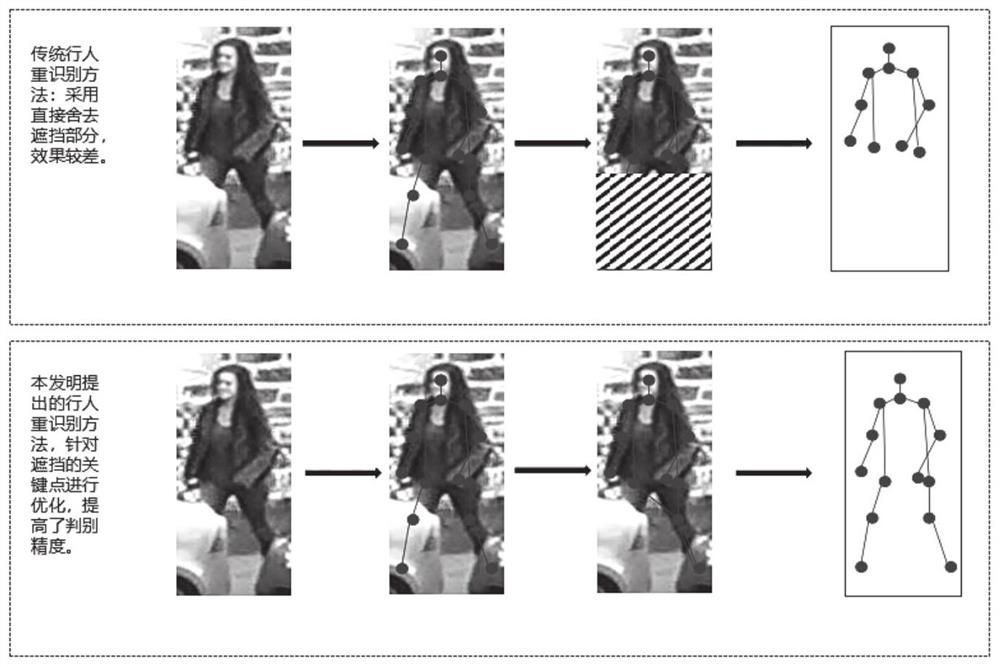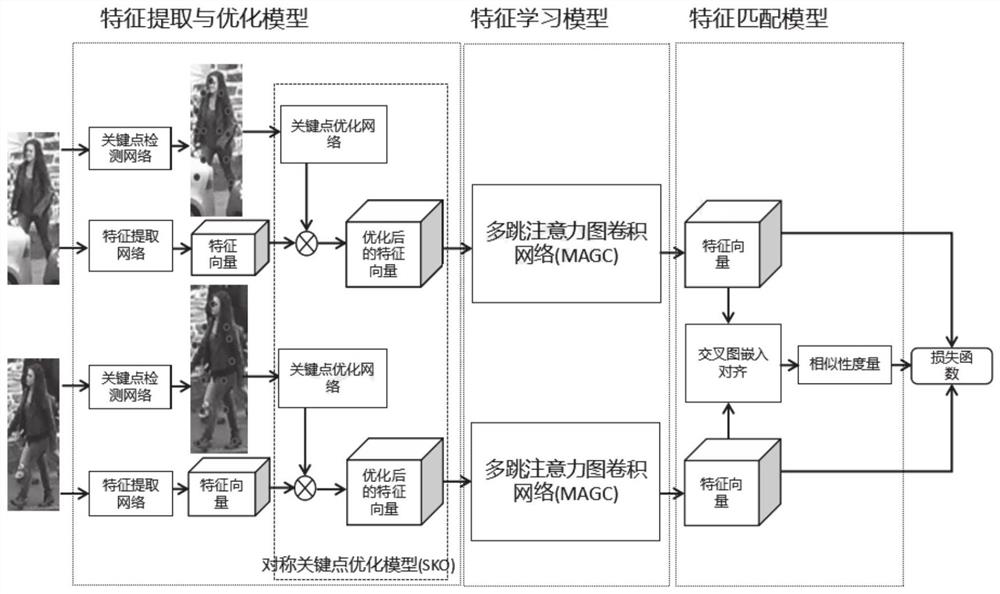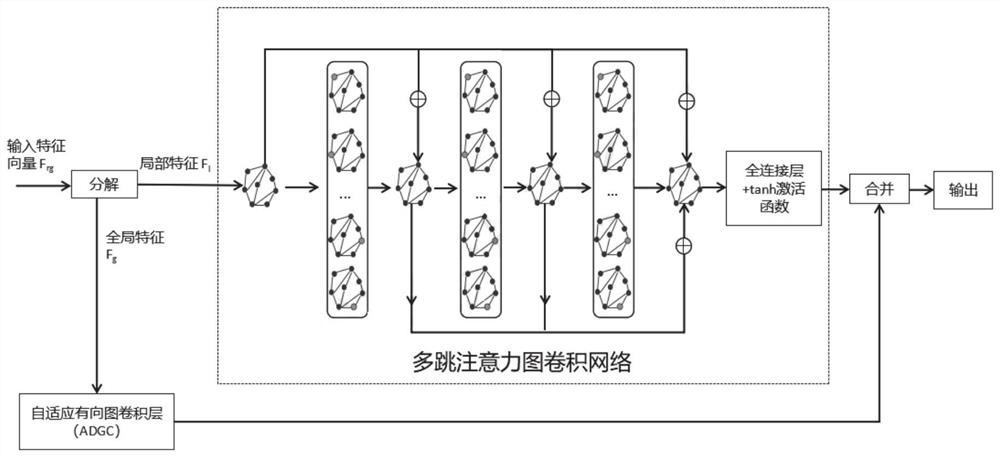Pedestrian re-identification method and system based on key point optimization and multi-hop attention graph convolution
A pedestrian re-identification and key point technology, applied in the field of image recognition, can solve problems such as unreliability and poor learning effect, and achieve the effects of improving accuracy, enhancing detection ability, and improving learning ability
- Summary
- Abstract
- Description
- Claims
- Application Information
AI Technical Summary
Problems solved by technology
Method used
Image
Examples
Embodiment 1
[0045] This embodiment discloses a pedestrian re-identification method based on key point optimization and multi-hop attention map convolution. The invention is mainly divided into three parts: feature extraction and optimization, feature learning and feature matching. Symmetric key Point optimization is used to extract as many effective features as possible to reduce the impact of the occluded part of pedestrians on the whole. In the feature learning part, multi-hop attention map convolution is added, which can maximize the use of valuable information in features, thereby improving the discrimination accuracy.
[0046] Specifically, see the attached Figure 1-2 As shown, it includes: building a feature extraction part mainly composed of a convolutional neural network and a human body key point extraction network and performing pre-training, and then adding an optimization network for human body key point optimization, and the two jointly form a feature extraction and optimiza...
PUM
 Login to View More
Login to View More Abstract
Description
Claims
Application Information
 Login to View More
Login to View More - R&D
- Intellectual Property
- Life Sciences
- Materials
- Tech Scout
- Unparalleled Data Quality
- Higher Quality Content
- 60% Fewer Hallucinations
Browse by: Latest US Patents, China's latest patents, Technical Efficacy Thesaurus, Application Domain, Technology Topic, Popular Technical Reports.
© 2025 PatSnap. All rights reserved.Legal|Privacy policy|Modern Slavery Act Transparency Statement|Sitemap|About US| Contact US: help@patsnap.com



